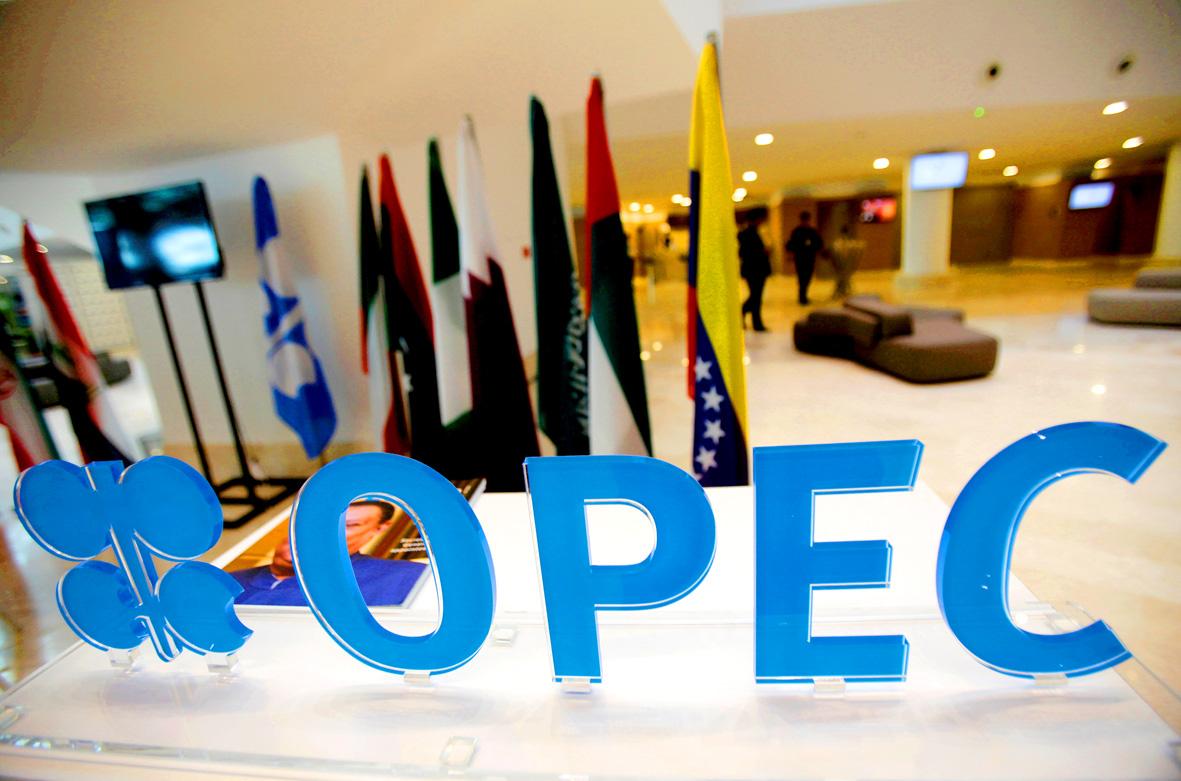Oil fell this week for the first time since May after days of volatile trading in the wake of OPEC+’s stalemate over a production increase in the near term.
Futures in New York declined 0.9 percent this week, although the US crude benchmark closed higher on Friday amid a broader market rebound.
Prices whipsawed this week amid ambiguity over the future of the OPEC+ alliance and swings in the US dollar. A stronger dollar makes commodities priced in the currency less attractive to investors.

Photo: Reuters
West Texas Intermediate crude for August delivery on Friday rose 2.2 percent to US$74.56 a barrel, down 0.9 percent weekly.
Brent crude for August delivery on Friday rose 1.9 percent to US$75.55 a barrel, down 0.8 percent for the week.
“Nobody really knows how the supply growth is going to project from here,” said Peter McNally, global head of industrials, materials and energy at Third Bridge. “The world needs more oil and was expecting more oil, so while there’s this uncertainty around supply, demand keeps growing.”
Oil accelerated to a six-year high earlier this week after OPEC+ failed to ratify a production increase, spurring concerns of a supply shortfall.
Fuel consumption is rising in countries such as the US, India and China during the summer driving season.
Americans have hit the road with gusto, leading to rapidly draining inventories and US refineries running close to full-bore to keep up with demand.
“We’re now in the middle of what appears to be an extremely robust summer and the US seeing very large stock draws, fundamentally, that we anticipate will continue to support the market,” RBC Capital Markets analyst Michael Tran said.
At the same time, the OPEC+ alliance and US shale producers have practiced discipline toward returning supply that was shelved during the pandemic.
The global oil market would remain in “deep deficit” of more than 3 million barrels per day through the third quarter of this year, Citigroup analysts have said.
OPEC+ countries will need to add more oil to the market at a higher level “sooner or later,” the report said.
Before talks broke down earlier this week, Saudi Arabia proposed that the coalition gradually revive 5.8 million barrels of daily capacity in monthly installments of 400,000 barrels through to the end of next year.
However, the United Arab Emirates blocked an agreement, saying that it will only support an extension of the pact if there are revisions to its own quota, which the country contends is outdated.
If no agreement is reached, the existing one states that output will remain steady next month. The unresolved deadlock also threatens to unravel the alliance altogether and spark a fresh price war.
Additional reporting by staff writer

Stephen Garrett, a 27-year-old graduate student, always thought he would study in China, but first the country’s restrictive COVID-19 policies made it nearly impossible and now he has other concerns. The cost is one deterrent, but Garrett is more worried about restrictions on academic freedom and the personal risk of being stranded in China. He is not alone. Only about 700 American students are studying at Chinese universities, down from a peak of nearly 25,000 a decade ago, while there are nearly 300,000 Chinese students at US schools. Some young Americans are discouraged from investing their time in China by what they see

Taiwan Transport and Storage Corp (TTS, 台灣通運倉儲) yesterday unveiled its first electric tractor unit — manufactured by Volvo Trucks — in a ceremony in Taipei, and said the unit would soon be used to transport cement produced by Taiwan Cement Corp (TCC, 台灣水泥). Both TTS and TCC belong to TCC International Holdings Ltd (台泥國際集團). With the electric tractor unit, the Taipei-based cement firm would become the first in Taiwan to use electric vehicles to transport construction materials. TTS chairman Koo Kung-yi (辜公怡), Volvo Trucks vice president of sales and marketing Johan Selven, TCC president Roman Cheng (程耀輝) and Taikoo Motors Group

MAJOR DROP: CEO Tim Cook, who is visiting Hanoi, pledged the firm was committed to Vietnam after its smartphone shipments declined 9.6% annually in the first quarter Apple Inc yesterday said it would increase spending on suppliers in Vietnam, a key production hub, as CEO Tim Cook arrived in the country for a two-day visit. The iPhone maker announced the news in a statement on its Web site, but gave no details of how much it would spend or where the money would go. Cook is expected to meet programmers, content creators and students during his visit, online newspaper VnExpress reported. The visit comes as US President Joe Biden’s administration seeks to ramp up Vietnam’s role in the global tech supply chain to reduce the US’ dependence on China. Images on

New apartments in Taiwan’s major cities are getting smaller, while old apartments are increasingly occupied by older people, many of whom live alone, government data showed. The phenomenon has to do with sharpening unaffordable property prices and an aging population, property brokers said. Apartments with one bedroom that are two years old or older have gained a noticeable presence in the nation’s six special municipalities as well as Hsinchu county and city in the past five years, Evertrust Rehouse Co (永慶房產集團) found, citing data from the government’s real-price transaction platform. In Taipei, apartments with one bedroom accounted for 19 percent of deals last